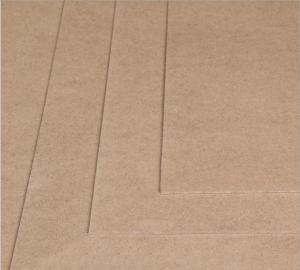Sheathing Plywood: The Essential Material for Roofing and Wall Construction
When it comes to building a home, one of the most important aspects to consider is the structural integrity of the walls and roof. This is where sheathing plywood comes into play. But what exactly is sheathing plywood, and why is it so crucial for your construction project? Let’s dive into the world of sheathing plywood and explore its many benefits and uses.
The Basics of Sheathing Plywood
Sheathing plywood is a type of engineered wood product that is used to provide a stable and strong base for various construction applications. It is made from thin layers of wood veneer that are glued together under heat and pressure. These layers, known as plies, are arranged in a cross-grain configuration, which gives the plywood its strength and dimensional stability.
Why Choose Sheathing Plywood?
There are several reasons why sheathing plywood is the go-to material for roofing and wall construction. Here are some of the top benefits:
– Strength and Durability: The cross-grain layers of sheathing plywood make it incredibly strong and durable, capable of withstanding heavy loads and harsh weather conditions.
– Moisture Resistance: Some types of sheathing plywood are treated to resist moisture, making them ideal for areas prone to rain and humidity.
– Versatility: Sheathing plywood can be used in a variety of applications, from roofing and wall sheathing to flooring underlayment and more.
– Cost-Effectiveness: Compared to other building materials, sheathing plywood offers a great balance of quality and affordability.
Applications of Sheathing Plywood
Sheathing plywood is not just a one-trick pony. Here are some of the common applications where it shines:
– Roof Sheathing: Provides a solid base for roofing materials and helps in distributing the roof’s weight evenly.
– Wall Sheathing: Offers a stable surface for attaching siding and other wall components.
– Floor Underlayment: Serves as a base for flooring materials, ensuring a smooth and level surface.
– Subflooring: Acts as a supportive layer between the floor joists and the finished flooring.
– Formwork: Used in concrete construction to create the shape and dimensions of the structure.
How to Choose the Right Sheathing Plywood
Selecting the right sheathing plywood for your project is crucial. Here are some factors to consider:
– Grade: Look for the grade stamp on the plywood, which indicates its quality and suitability for specific applications.
– Thickness: The thickness of the plywood should match the requirements of your project.
– Size: Choose the size of the plywood sheets based on the dimensions of your construction area.
– Type: There are different types of sheathing plywood, such as CDX, OSB, and marine-grade, each with its own properties and uses.
Installation Tips for Sheathing Plywood
Proper installation is key to getting the most out of your sheathing plywood. Here are some tips to keep in mind:
– Stagger the Seams: When installing sheets, stagger the seams to create a stronger and more stable structure.
– Fasten Correctly: Use the appropriate fasteners and follow the manufacturer’s recommendations for spacing and patterns.
– Check for Level: Ensure that the surface is level before attaching the plywood to avoid warping or unevenness.
– Seal Edges: Properly seal the edges of the plywood to prevent moisture penetration and prolong its lifespan.
The Environmental Impact of Sheathing Plywood
While sheathing plywood is a versatile and cost-effective material, it’s also important to consider its environmental impact. Here are some points to ponder:
– Sustainable Forestry: Look for sheathing plywood that is sourced from sustainably managed forests.
– Recycled Content: Some plywood products may contain recycled wood content, which can help reduce waste.
– Life Cycle: Consider the life cycle of the plywood and how it can be recycled or repurposed at the end of its use.
The Future of Sheathing Plywood
As the construction industry continues to evolve, so does the technology and materials used within it. Here’s a glimpse into what the future might hold for sheathing plywood:
– Innovations in Adhesives: New adhesives can improve the strength and durability of plywood.
– Engineered Wood Products: The development of new engineered wood products may offer alternative options to traditional plywood.
– Green Building: There’s a growing trend towards green building practices, which could influence the materials and methods used in construction.
Conclusion
Sheathing plywood is a versatile, strong, and cost-effective material that plays a vital role in the construction of walls and roofs. By understanding its benefits, applications, and proper installation techniques, you can ensure that your construction project is built to last. And as the industry moves towards more sustainable and innovative practices, the future of sheathing plywood looks brighter than ever.

